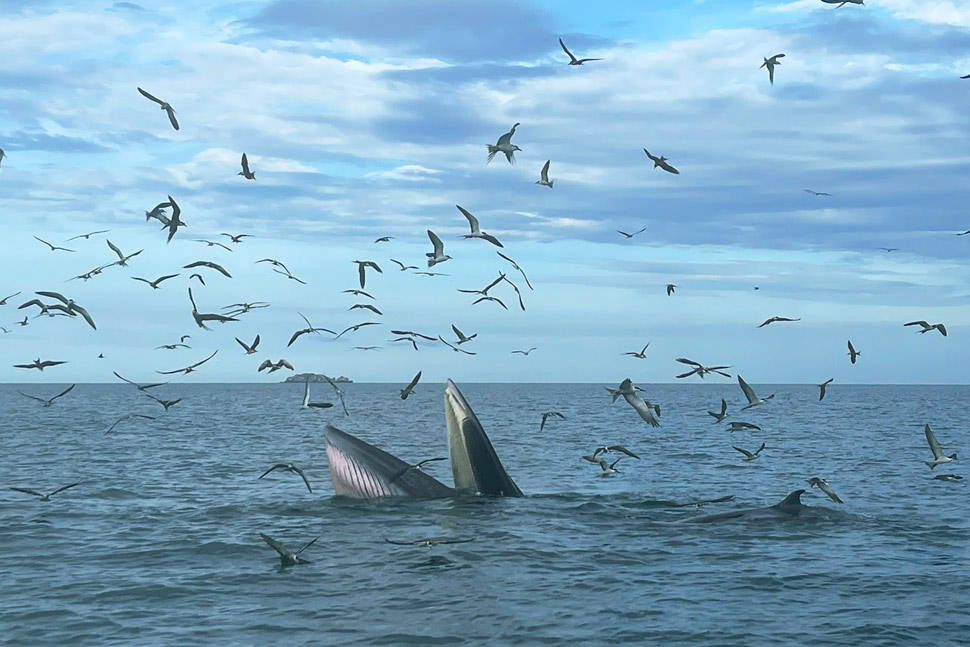On July 3, Mr. Tran Van Tai (35 years old, De Gi commune, Gia Lai province), a sea tourism worker in the Vung Boi - Hon Trau - De Gi area, shared a rare moment about a family of Bryde elephants with 3 individuals appearing together, hunting for prey in the local sea.
According to Mr. Tai, from June 29 to now, he has taken tourists to the sea every day to watch the elephants hunt for prey. "Only the mother and daughter of a whale go to find food together, the father fish often swim 300 - 600m away," said Mr. Tai.

Previously, on the afternoon of June 29, Mr. Nguyen Quoc Dinh (25 years old, in Quy Nhon Dong, Gia Lai province) discovered Bryde whale relatives about 15-16m long in the Bai Dua area (Nhon Ly), while taking tourists to Hon Seo for sightseeing.
Some local people also recorded Bryde elephants present at two famous landmarks at the same time: Hoa Hoa Hoa (Nhon Ly) and Vung Boi (De Gi). They appear from early June to July.
According to Mr. Vu Long - expert at the Center for Biodiversity and endangered Species Conservation (CBES), Bryde whale (Balaenoptera edeni) is a marine animal belonging to the toothoth-and-oth whale family. They are characterized by 3 border lines running on the front end of the airway and 40 - 70 folds in the throat that help open the mouth when looking for food.
Whales have a unique lifestyle, but sometimes they still appear in pairs, or in family groups, especially during the breeding period. The pregnancy of this species lasts from 10 to 12 months, raising children for about 12 months. In the first 6 months, baby whalees use only breast milk.
Bryde sharks have returned to the Gia Lai sea for many consecutive years, showing that this place has a suitable habitat for food sources, terrain structure and environmental conditions.
" Maintaining a healthy marine environment, controlling fishing activities and developing coastal areas well is a key factor to ensure Bryde elephants continue to return in the future," said Mr. Long.











